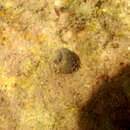Comprehensive Description
provided by Smithsonian Contributions to Zoology
Fluminicola coloradensis Morrison, 1940
Fluminicola fusca.—Binney, 1865:92 [in part].—Ingersoll, 1875:127 [in part].—Pilsbry, 1899a:123 [in part].—Orcutt 1901a:35 [in part].—Henderson, 1924:192 [in part].—Chamberlin and Jones, 1929:180 [in part].—Henderson, 1935:107 [in part]; 1936a:139 [in part].—Beetle, 1961:5.
Fluminicola coloradoense Morrison, 1940:125 [in part; holotype: USNM 526631; type locality: Green River, Wyoming].—Taylor, 1966a:34, fig. 14 [as synonym of L. hindsi].—Rosewater, 1984:3.—Beetle, 1989:639 [as synonym of L. hindsi].
Lithoglyphus hindsii [sic].—Taylor, 1966a:34, fig. 14 [in part].
Lithoglyphus coloradoensis.—Taylor, 1975a:60.
Fluminicola hindsi.—Burch and Tottenham, 1980:102 [in part].
Lithoglyphus hindsi.—Taylor, 1985:306 [in part].—Beetle, 1989:639 [in part].
DIAGNOSIS.—Large with subglobose to broadly conical shell; penis of medium size, sickle-shaped.
A pigmented seminal receptacle (and occasionally a pigmented coiled oviduct) is unique to this species among members of the genus. Fluminicola coloradensis is further distinguished from sister taxon F. fuscus by the grey white shell color, absence of either pronounced subsutural angulation or keel on body whorl, weaker operculum callus, frequent presence of third pair of basal cusps on central radular teeth, bulbous distal penis, longer bursal duct, and greater overlap of seminal receptacle by albumen gland.
DESCRIPTION.—Shell (Figures 4A, 5A–D) subglobose to broadly conical; height 6.5–10.8 mm; whorls 3.5–4.5. Protoconch (Figure 6A) of 1.5 whorls; diameter about 1.0 mm; microsculpture of numerous, sometimes anastomosing, strong spiral striae. Teleoconch whorls convex, shouldered, often with broad sutural shelf. Microsculpture of collabral growth lines and occasional weak spiral striae or scratches. Periostracum tan. Shell opaque, grey white. Aperture large, broadly lunate, narrowed above. Outer lip usually thick. Parietal lip complete, usually thick, adnate or rarely slightly detached. Columellar lip thick, columellar swelling broad, often covering umbilical region. Shell anomphalous, cryptomphalous, or with small umbilicus.
Operculum (Figure 7A) of medium thickness; outer margin with obvious rim. Outer edge of attachment-scar margin slightly thickened, inner edge unthickened. Callus weak or absent.
Radula (Figure 8A–C) with about 65 rows of teeth; ribbon length 3.0 mm, ribbon width 0.3 mm; central tooth width 95 μm. Central tooth with slight dorsal indentation; lateral cusps 2–3; median cusp broadly U-shaped, slightly broader and longer than laterals; basal cusps 2–3, narrow, originating near dorsal edge of lateral angles; basal tongue medium wide, basal sockets moderately excavated; lateral angles thickened. Lateral tooth with convex dorsal edge, very slightly indented centrally; dorsal edge about 50% of tooth width; lateral shaft shorter than height of tooth face; tooth face taller than wide; central cusp broadly U-shaped, lateral cusps 3 (sometimes 4 on outer side). Inner marginal teeth with 9–11 cusps; outer marginal teeth with 10–11 cusps.
Brown black pigment well developed on snout and tentacles (except for light patch around and slightly posterior to eyes). Head light grey, foot grey black and often dark along anterior and posterior edges. Pallial roof and visceral coil black.
Contents of pallial cavity shown in Figure 2. Ctenidium overlapping pericardium; filaments about 38, tall, pleated. Osphradium about 40% of ctenidium length. Hypobranchial gland swollen on proximal genital duct. Fecal pellets oblique, almost perpendicular. Renal organ greatly swollen; renal opening white. Salivary glands terminating anterior to cerebral ganglia. Stomach about as long as style sac. Ganglia pigmented.
Testis 1.5 whorls, overlapping posterior stomach chamber, filling more than 50%–67% of visceral coil behind stomach. Prostate gland with 33% of length in pallial roof. Vas deferens nearly straight in pallial roof and in neck. Penis (Figure 9A) of medium size, sickle-shaped, usually very tightly coiled, with strong folds along proximal 67% of length; base slightly narrowed; medial section gently tapering; bulbous distal section narrowing considerably to short, pointed tip (Figure 1E,F). Penial duct near center, of medium width, strongly undulating in basal and medial sections. Penis usually with dark epithelial pigment on proximal half of dorsal surface, rarely pale; black subepithelial pigment scattered along length of penial duct.
Ovary 1.0 whorl, abutting posterior edge of stomach, filling about 50% of visceral coil behind stomach. Distal female genitalia shown in Figure 10A. Coiled oviduct narrow, sometimes weakly pigmented; proximal portion usually with 1–2 small horizontal twists or coils; distal portion of primary coil sometimes containing sperm. Coiled oviduct and bursal duct join just behind pallial wall. Bursa copulatrix about 50% of albumen gland length, pyriform, about as long as wide, with central section decidedly narrowed, positioned largely posterior to gland. Bursal duct about 67% of bursa length, originating slightly lateral to tip of organ. Seminal receptacle about 33% of bursa copulatrix length, lightly pigmented, positioned anterior to bursa copulatrix near posterior edge of albumen gland, partly or entirely overlapped by gland. Pallial gonoduct with deep rectal furrow. About 17% of albumen gland lying in front of posterior pallial wall. Capsule gland about as long and as wide as albumen gland. Ventral channel with anterior vestibule. Genital opening a subterminal slit fringed by small papilla.
DISTRIBUTION.—Upper Green River drainage, Wyoming (Figure 11). We have been unable to confirm the Emery County, Utah, record, which is well downflow from other Green River sites for the species and may represent drift material (shells in this lot are worn and were collected empty).
MATERIAL EXAMINED.—UTAH. Green River, UF 78511. Head of Green River, USNM 28103, USNM 120462. ?Emery County: Green River, Hideout, FMNH 178501.
WYOMING. ANSP 88598. Wyoming Territory, USNM 28538, USNM 170789. Green River, USNM 526631 (holotype), USNM 526576 (paratypes), USNM 159396, USNM 160394. Green River, Blacks Fork, Millersville, ANSP 27769. Lincoln County: Hams Fork, Green River, Bells Fish Cliff, USNM 526754. Green River, Smiths Fork, ANSP 27773. Sublette County: Green River at bridge, HWY 359, 12.8 km north of Place Cafe, USNM 883191*. Green River, HWY 187–189 bridge, USNM 883493*.
- bibliographic citation
- Hershler, Robert and Frest, T. J. 1996. "A review of the North American freshwater snail Genus Fluminicola (Hydrobiidae)." Smithsonian Contributions to Zoology. 1-41. https://doi.org/10.5479/si.00810282.583

